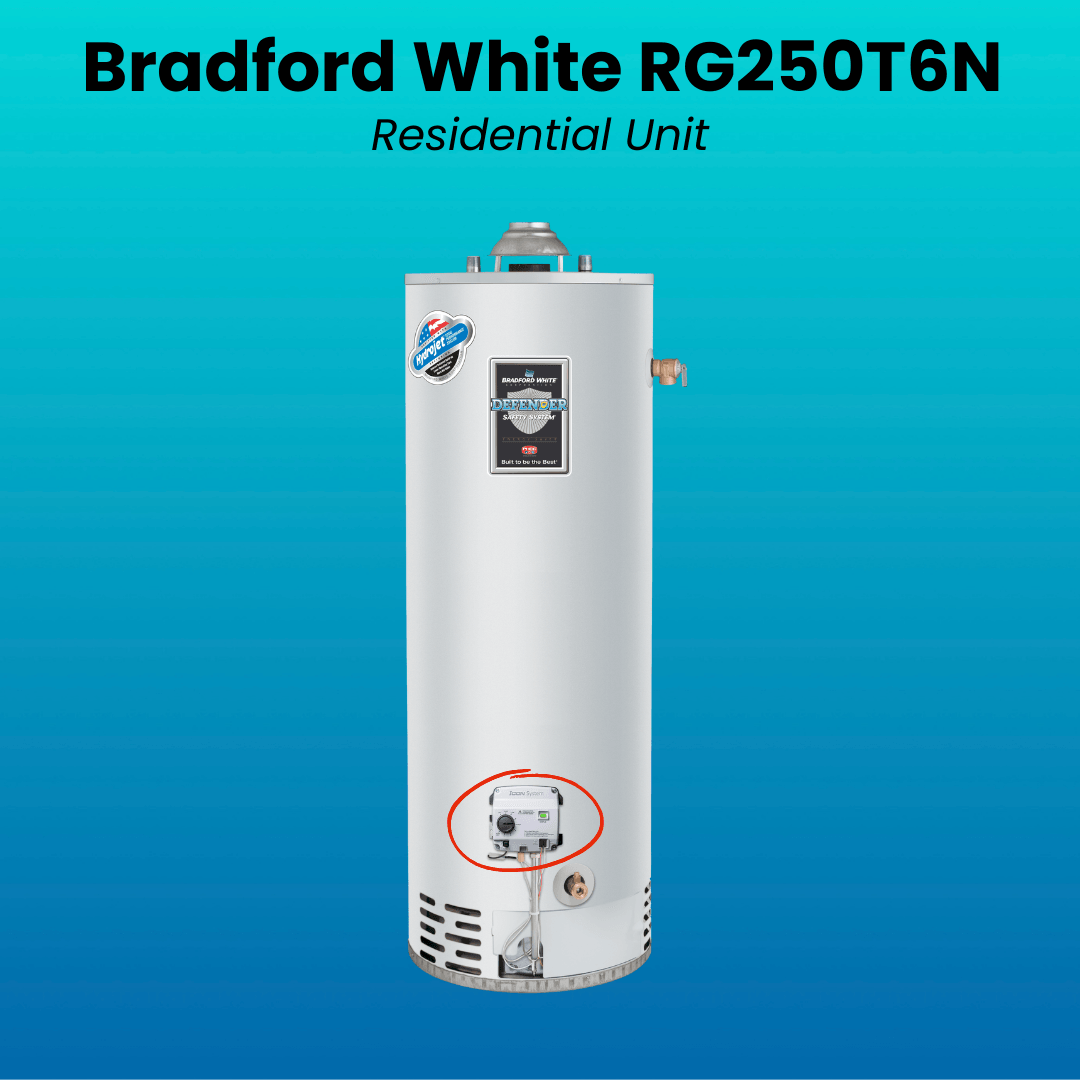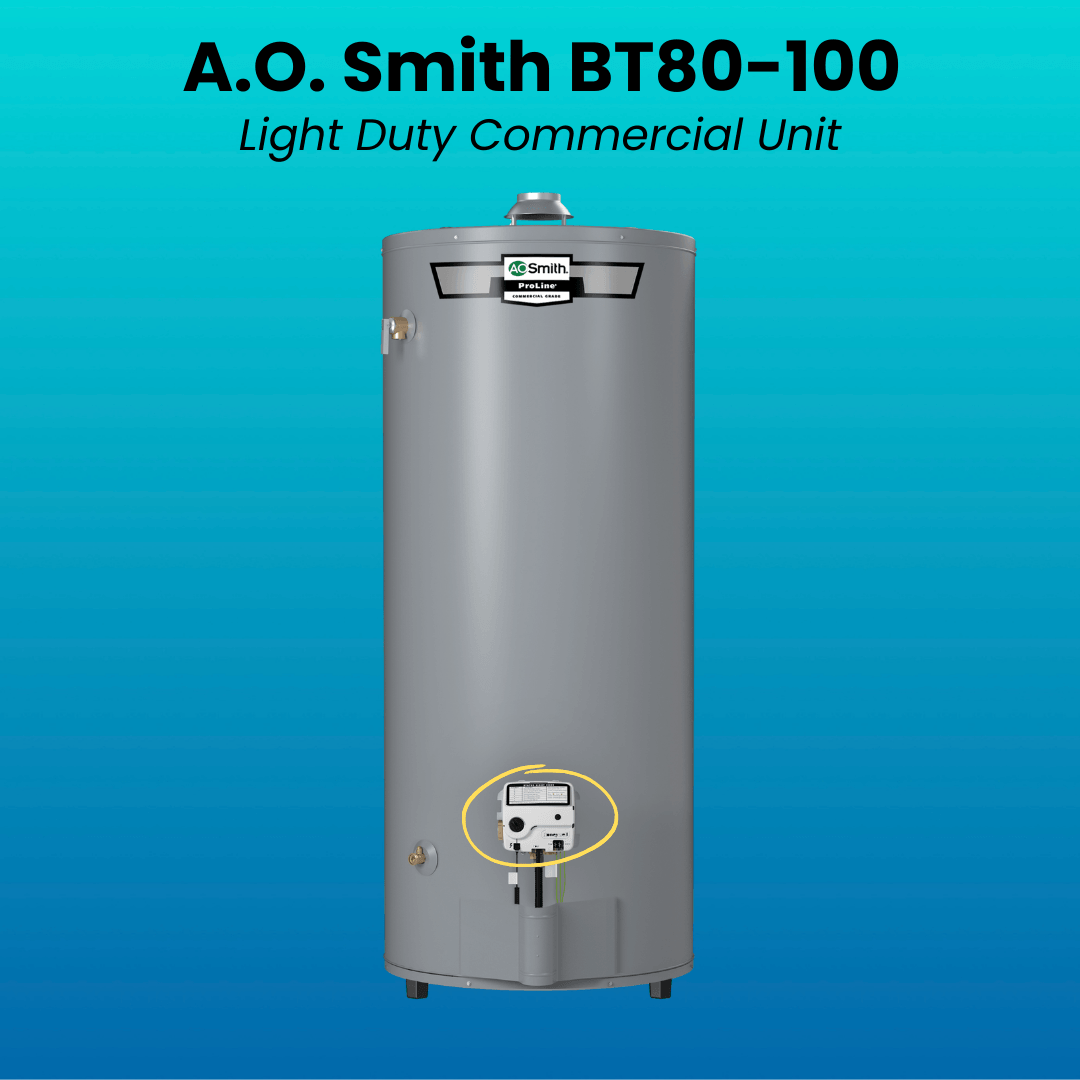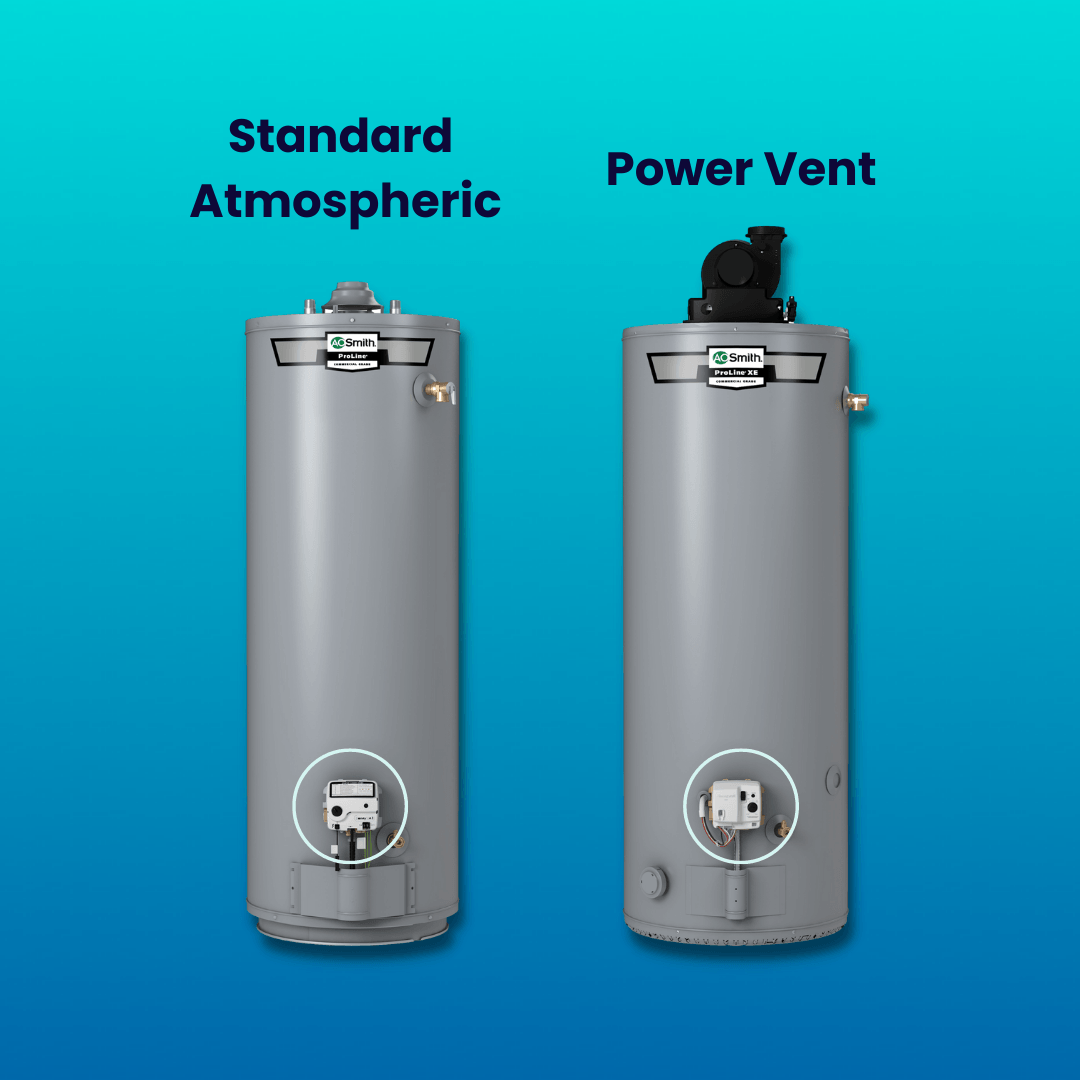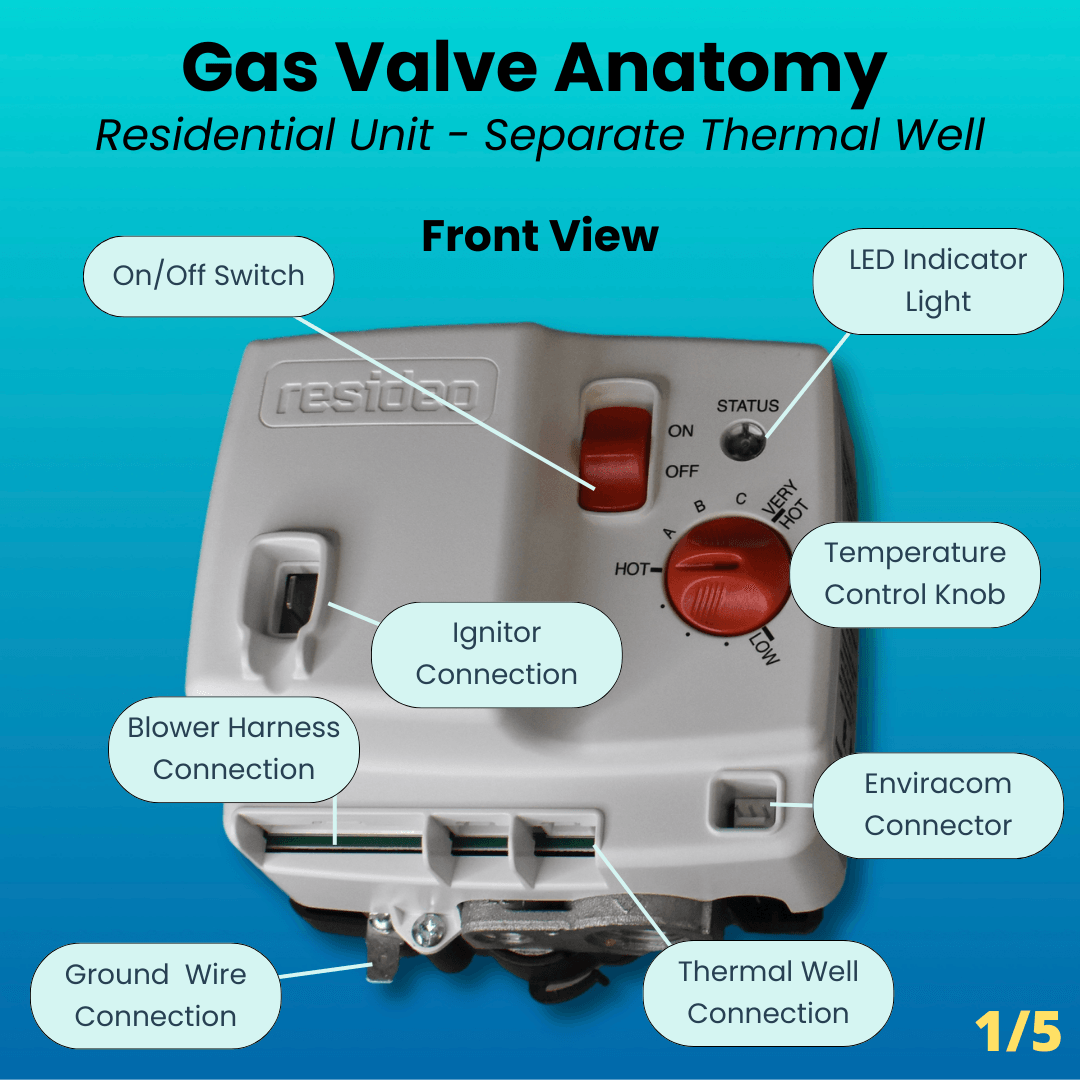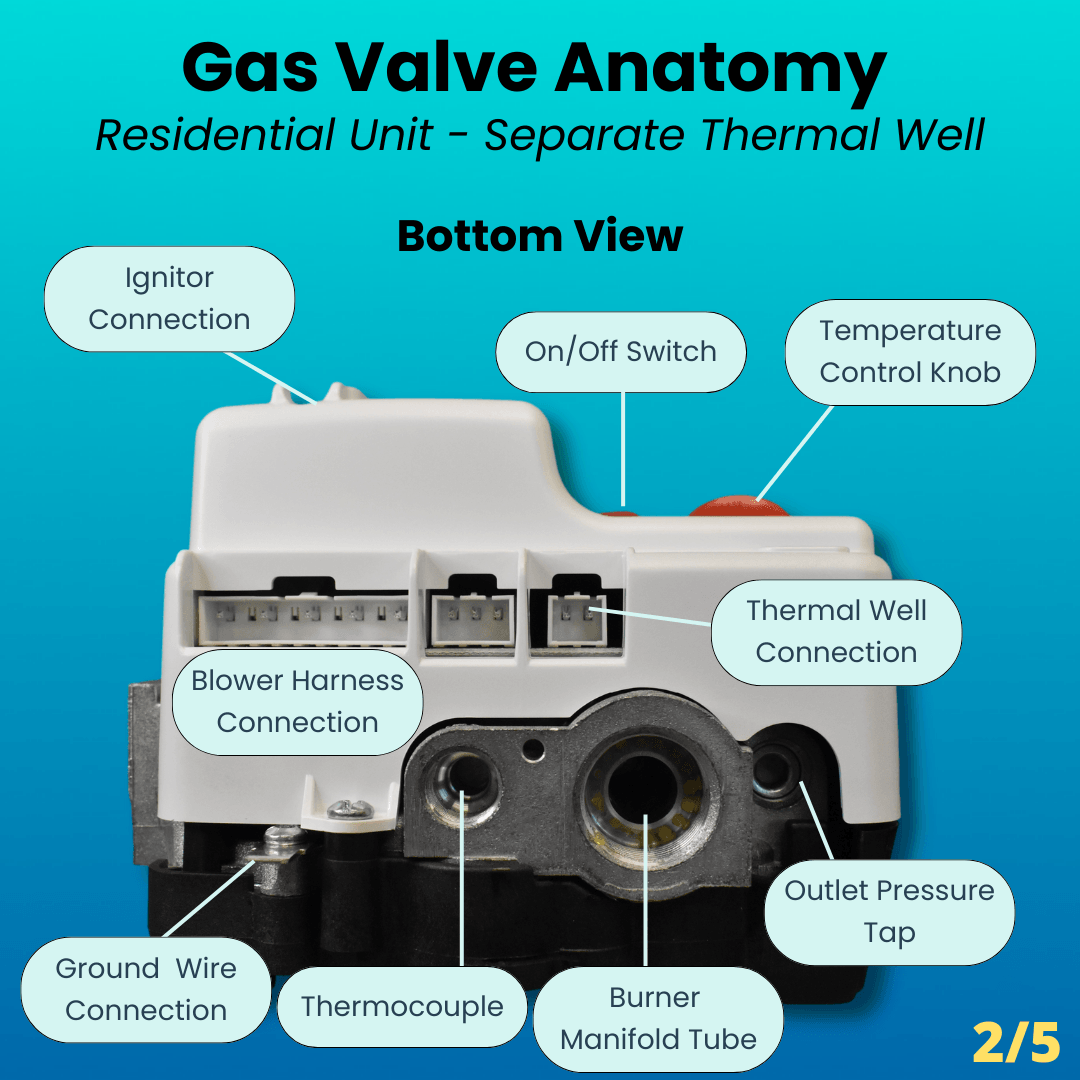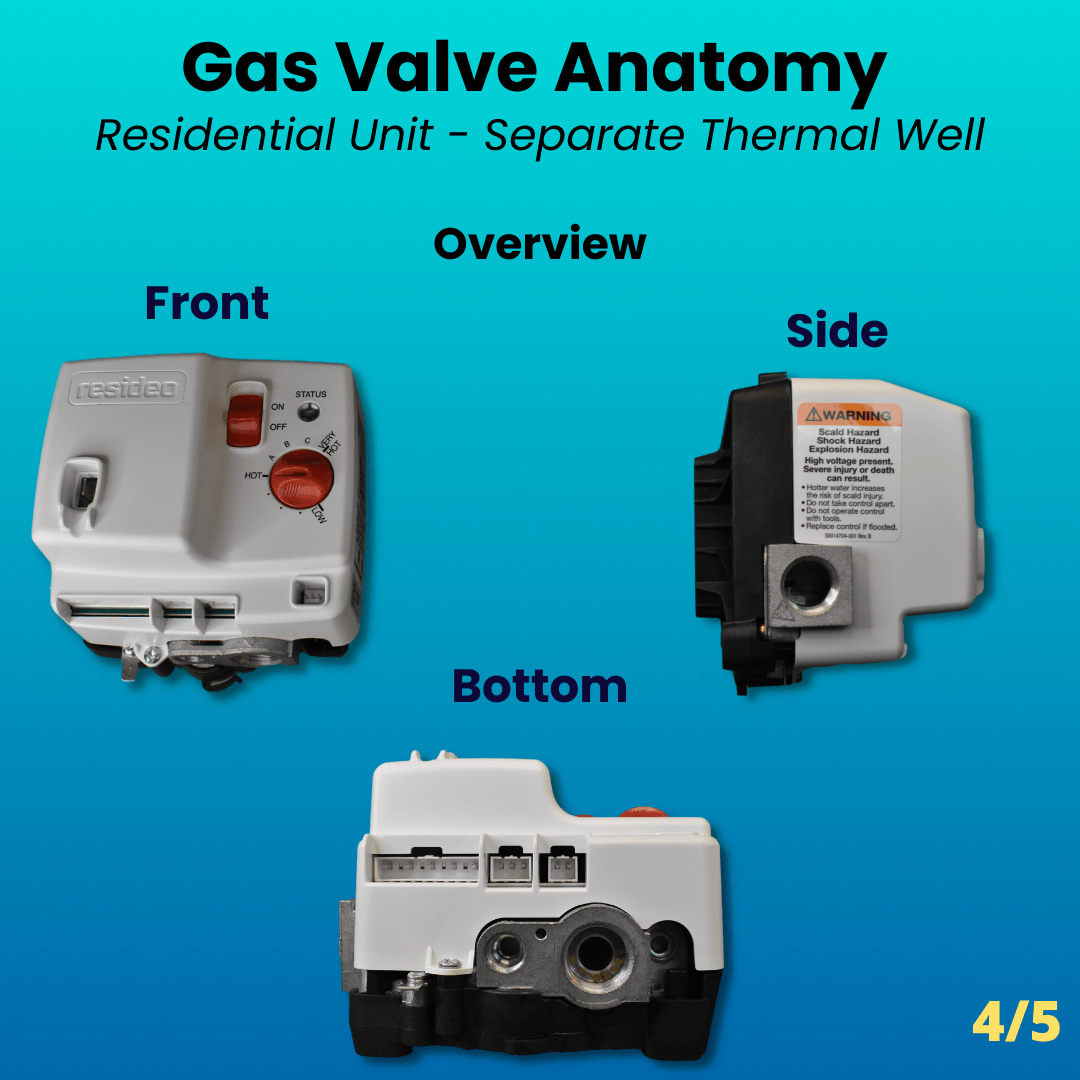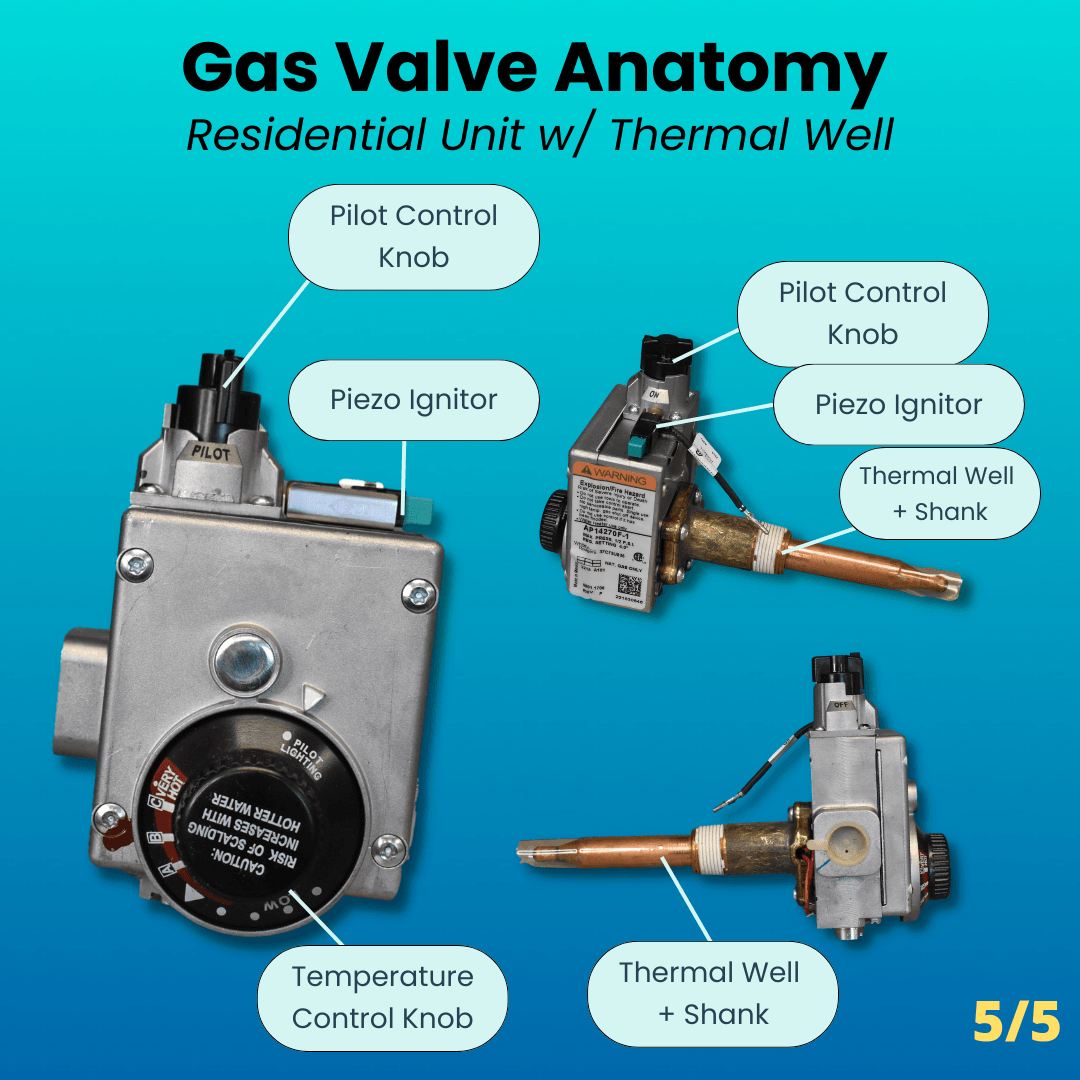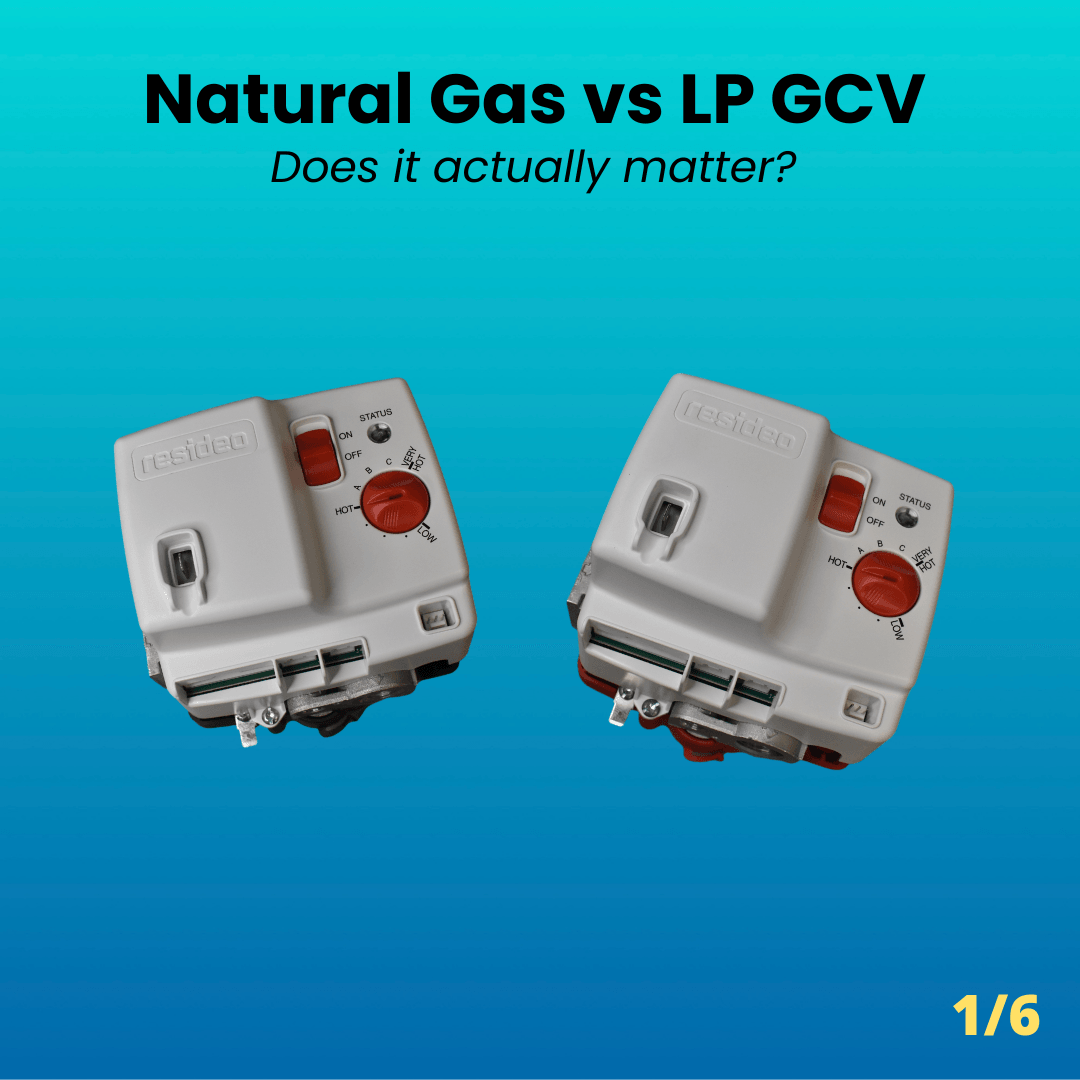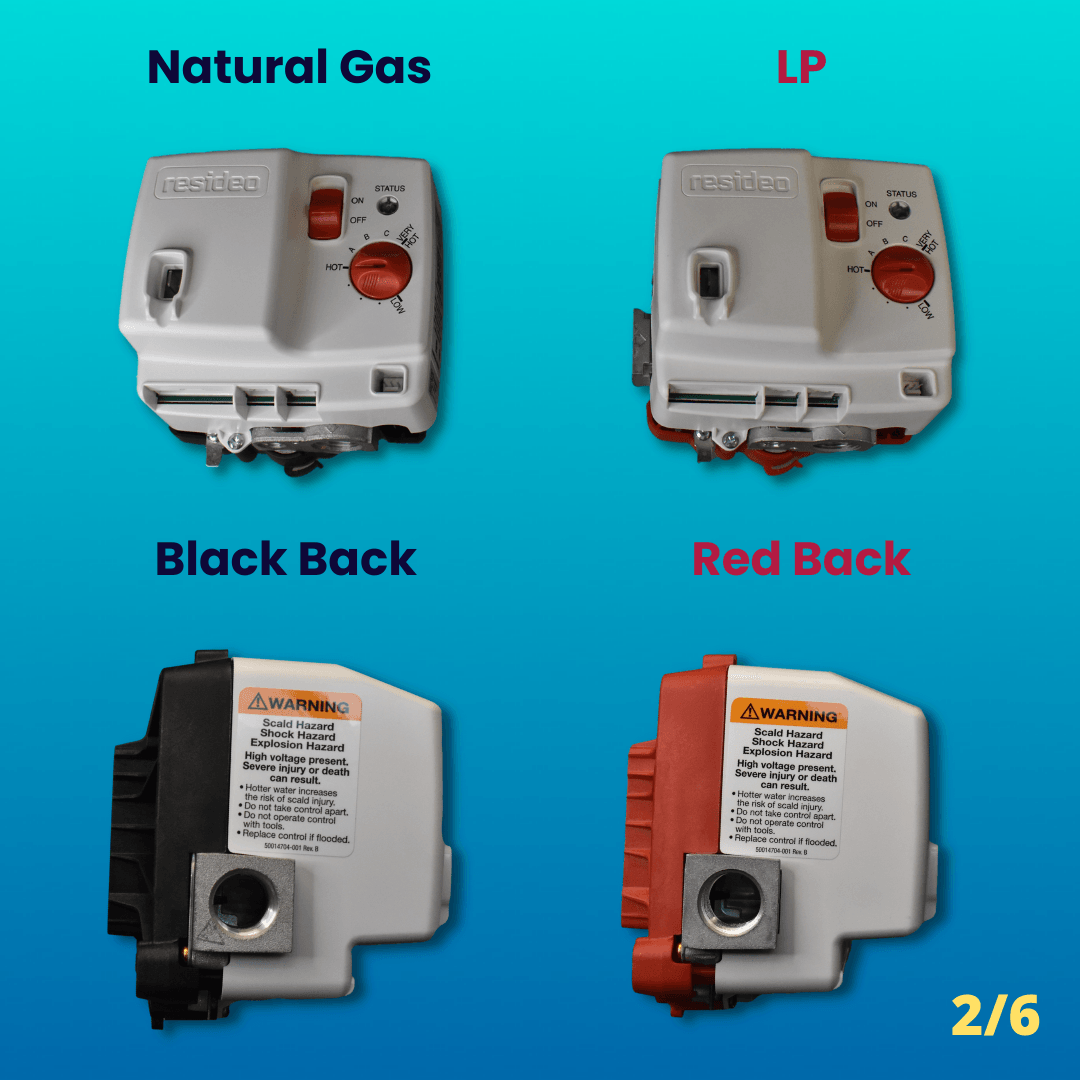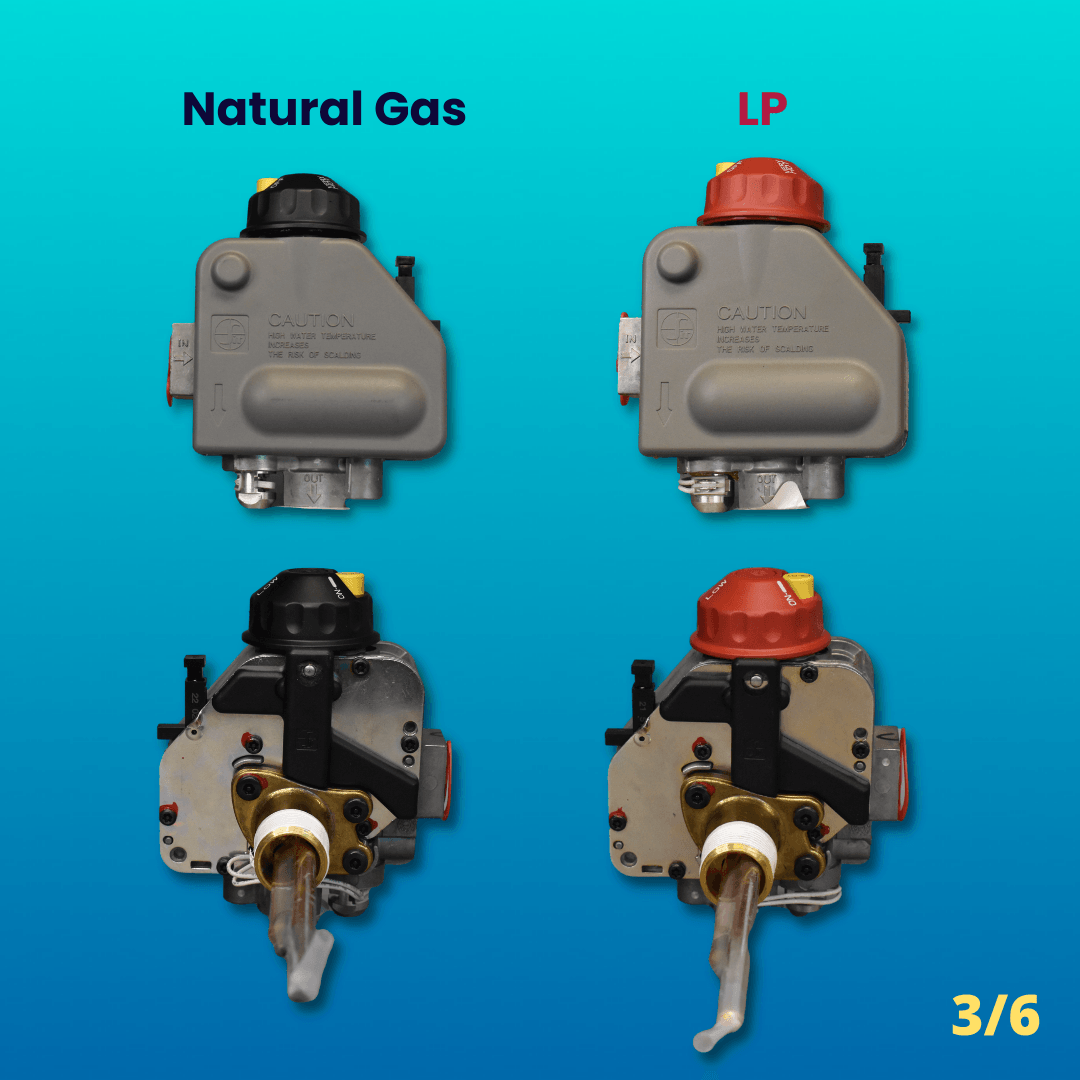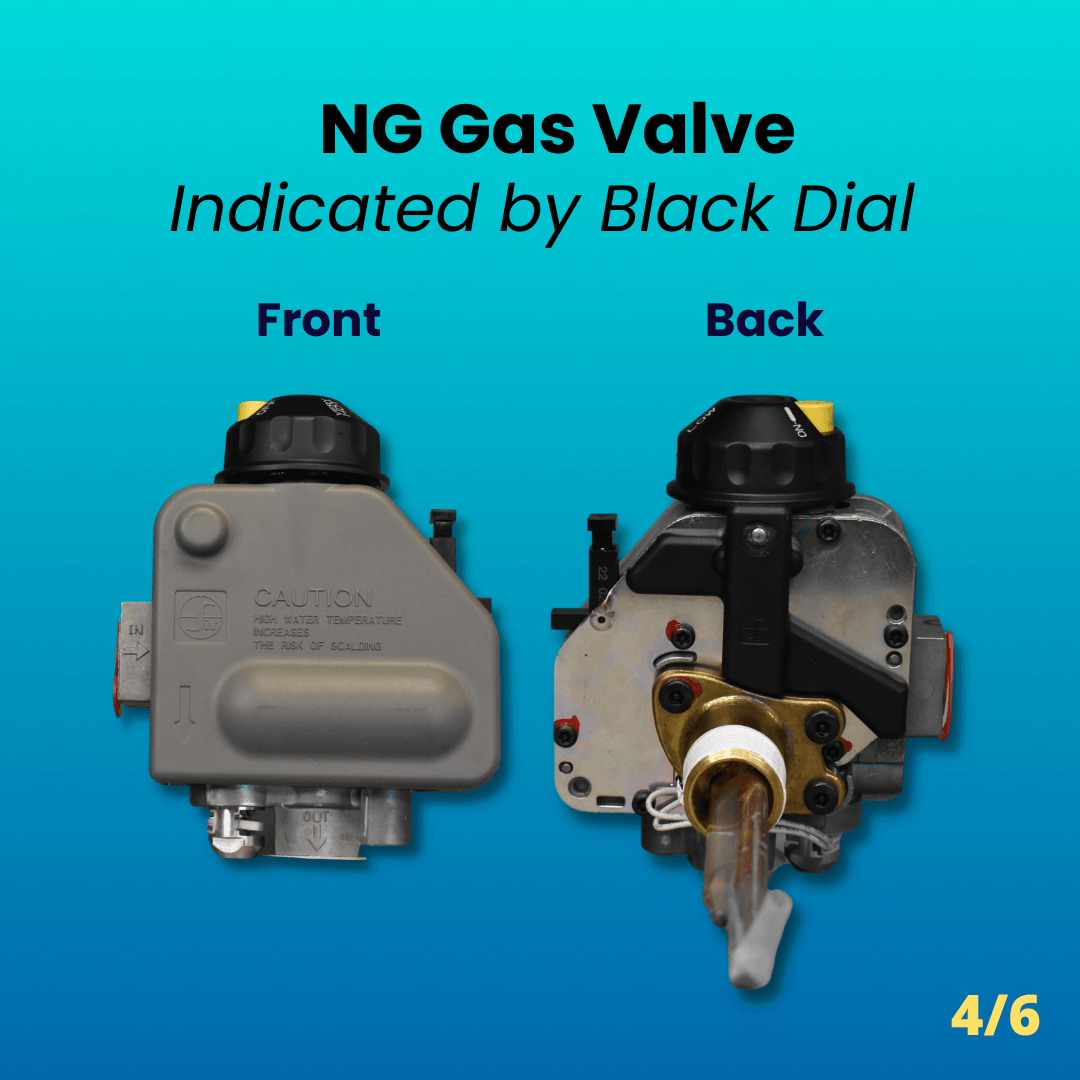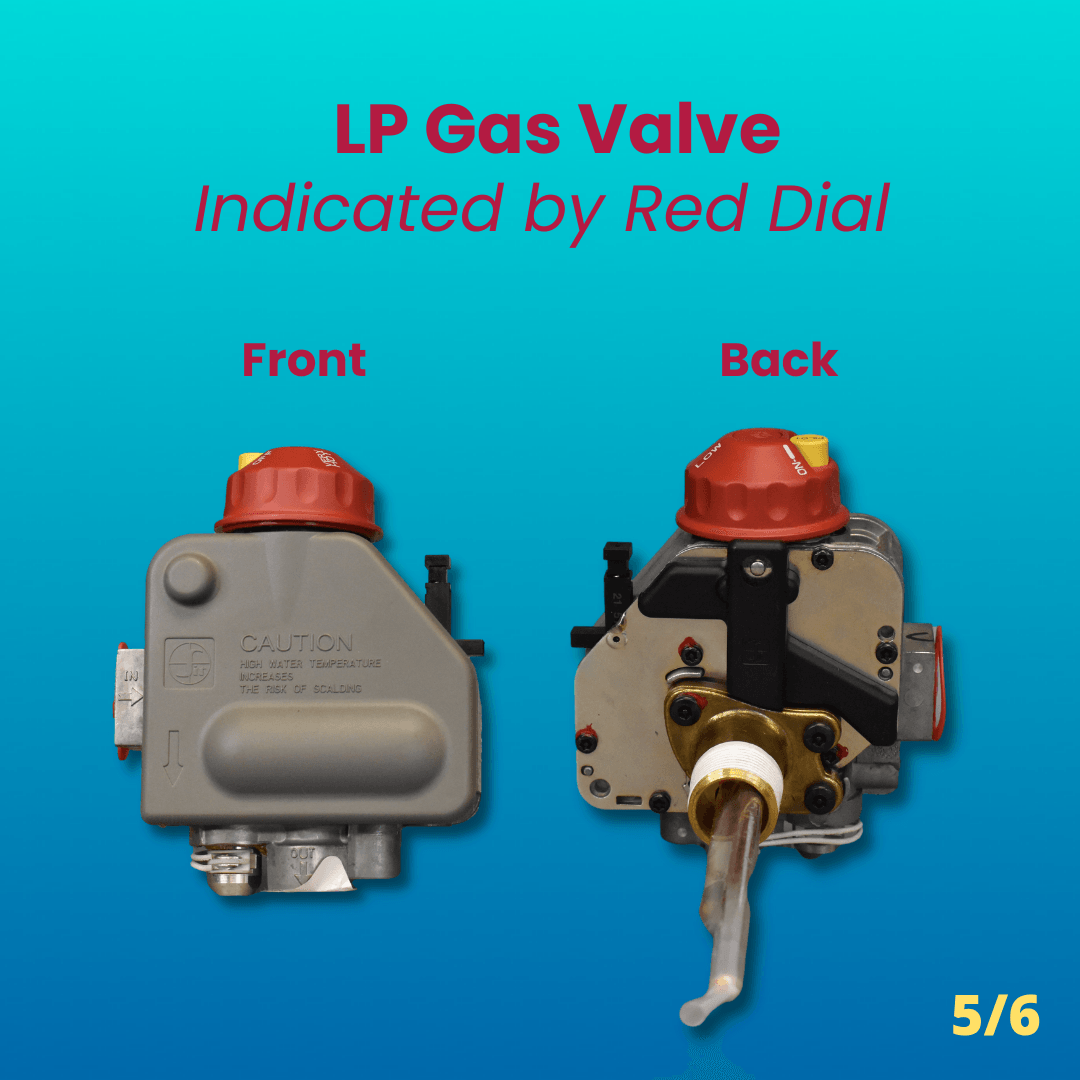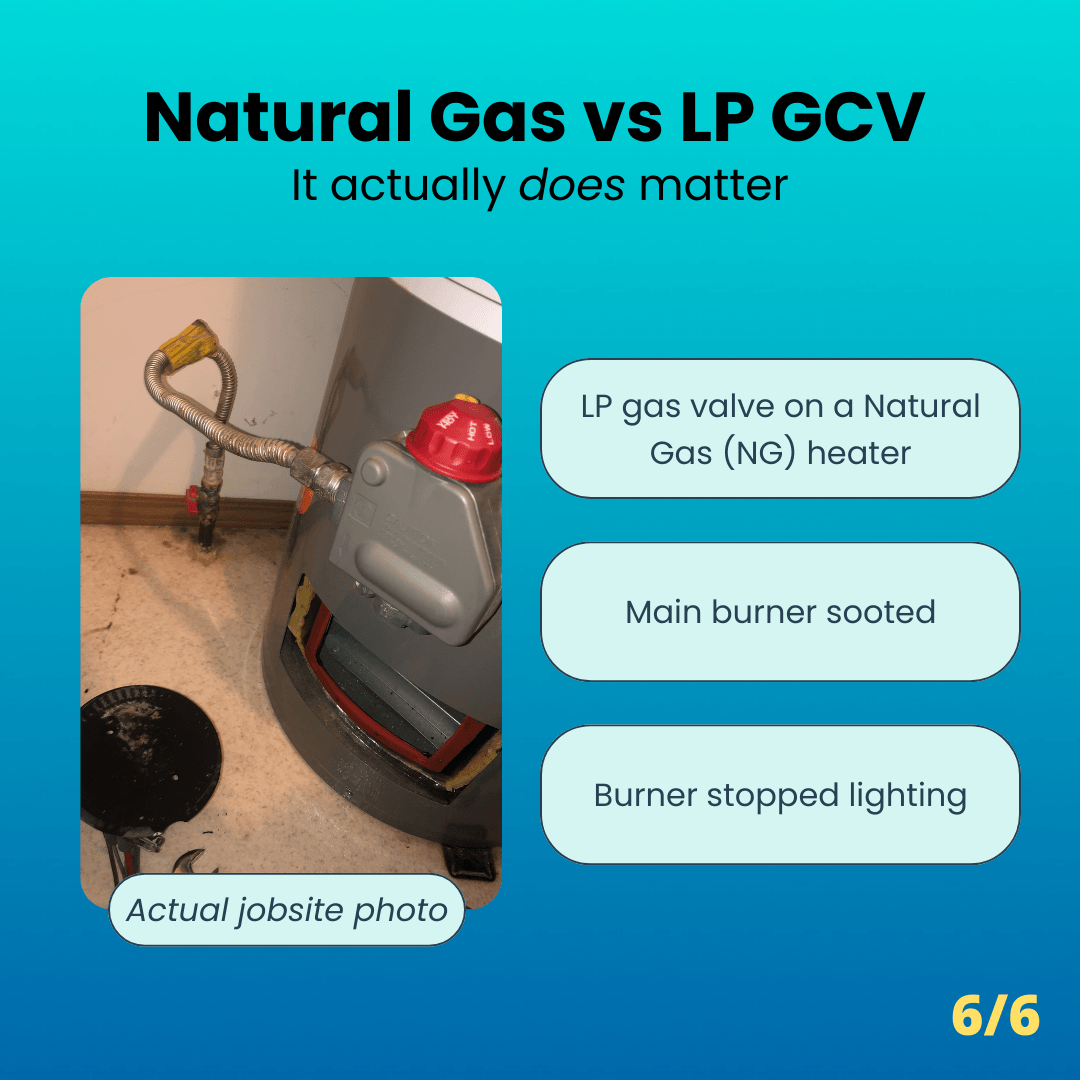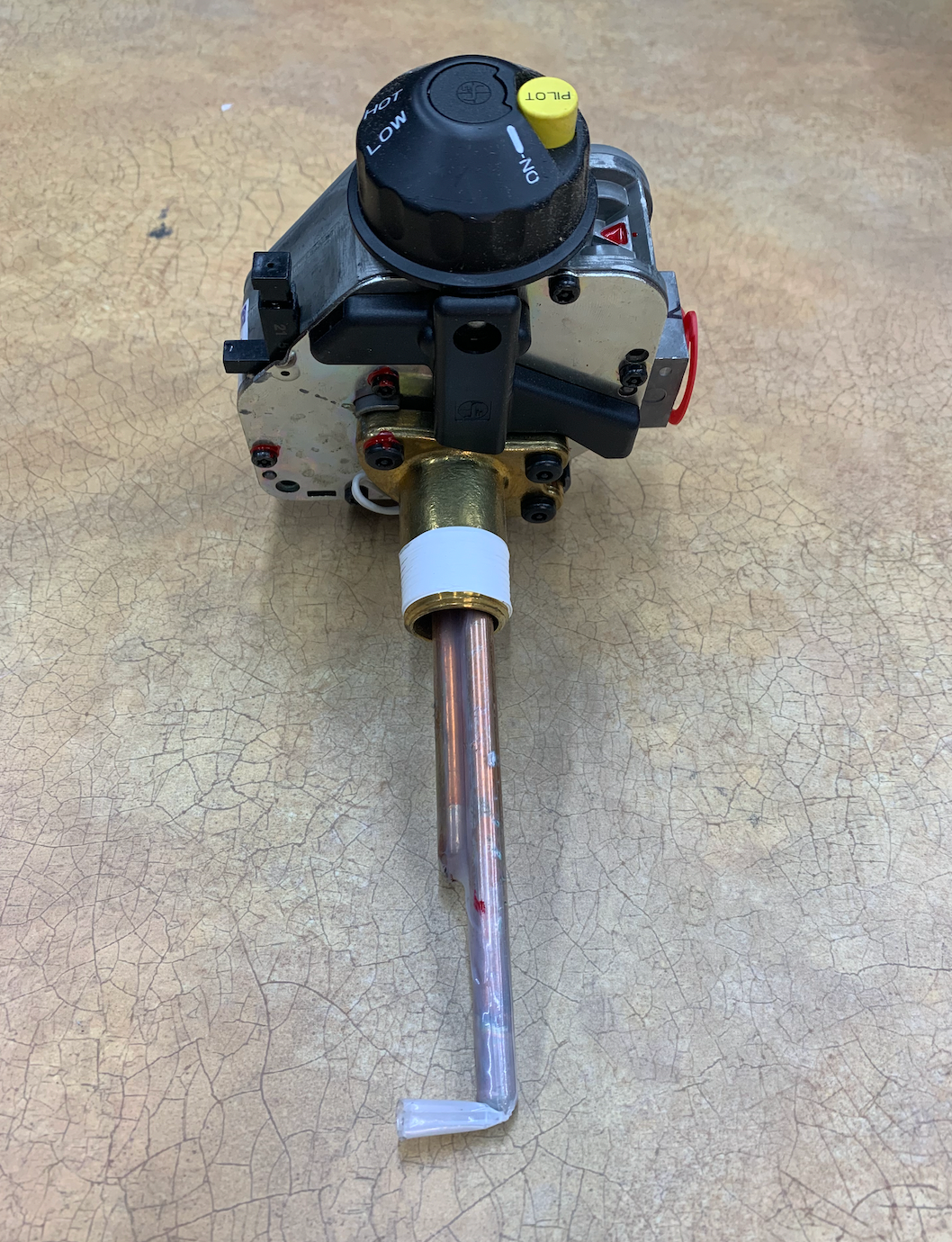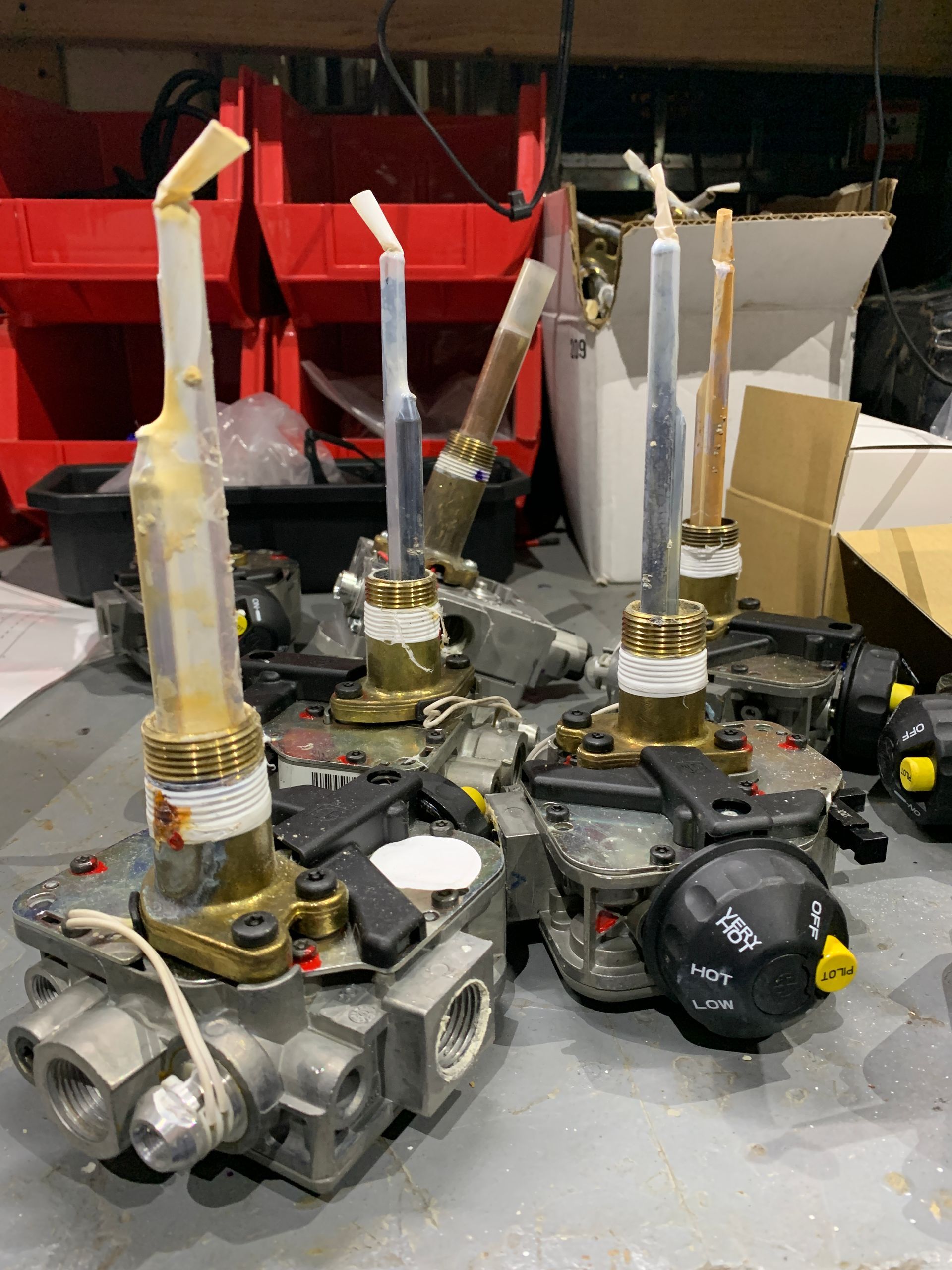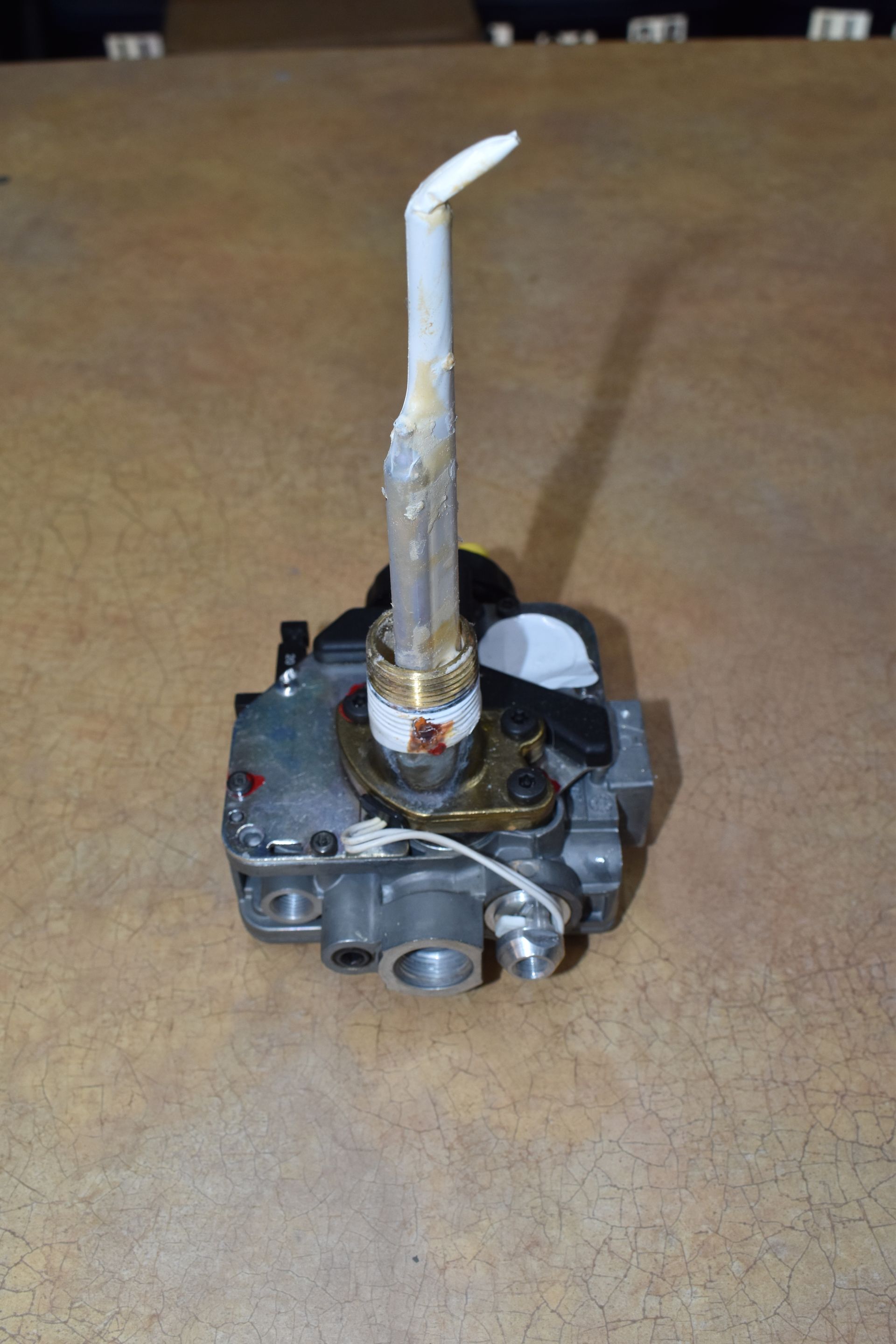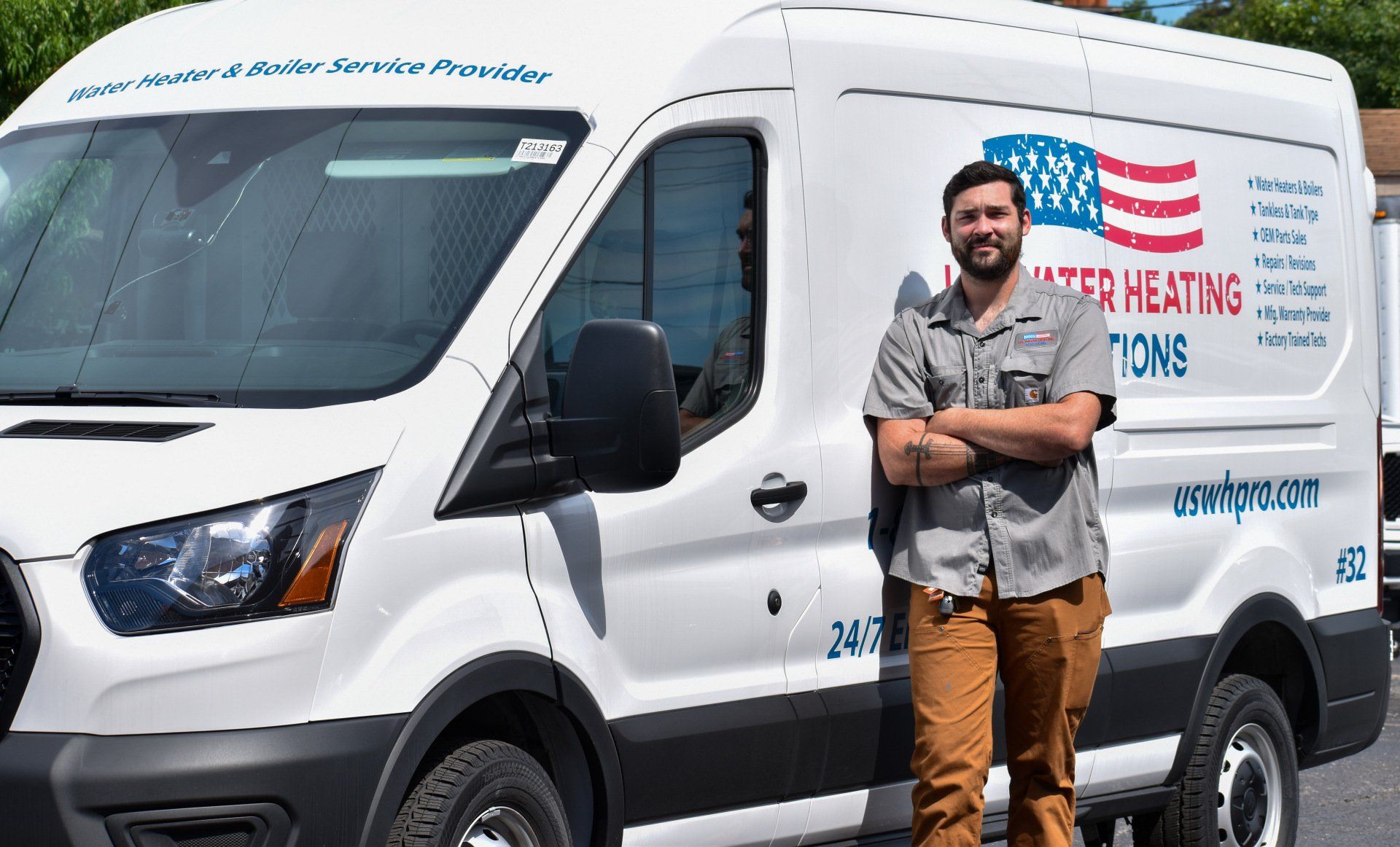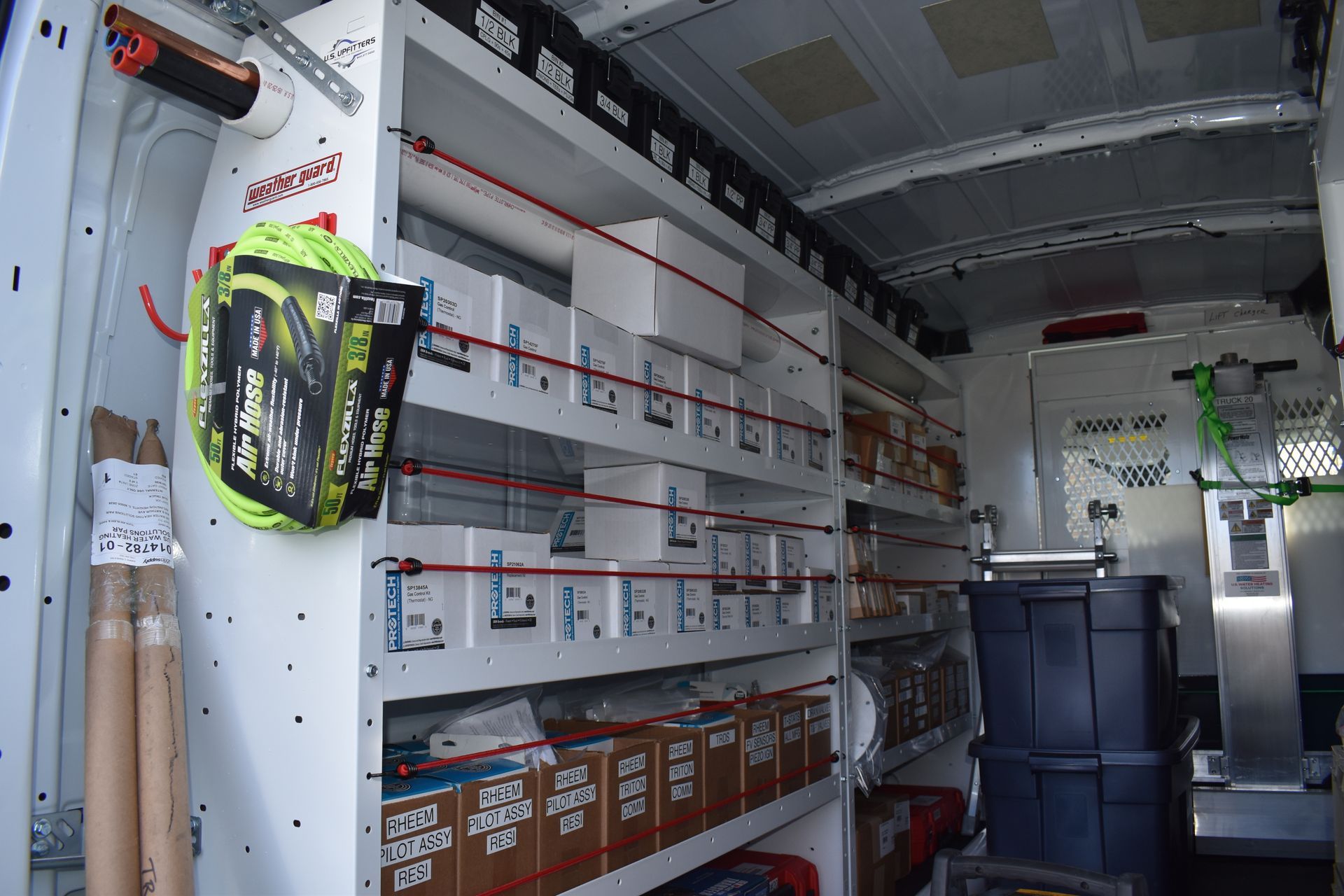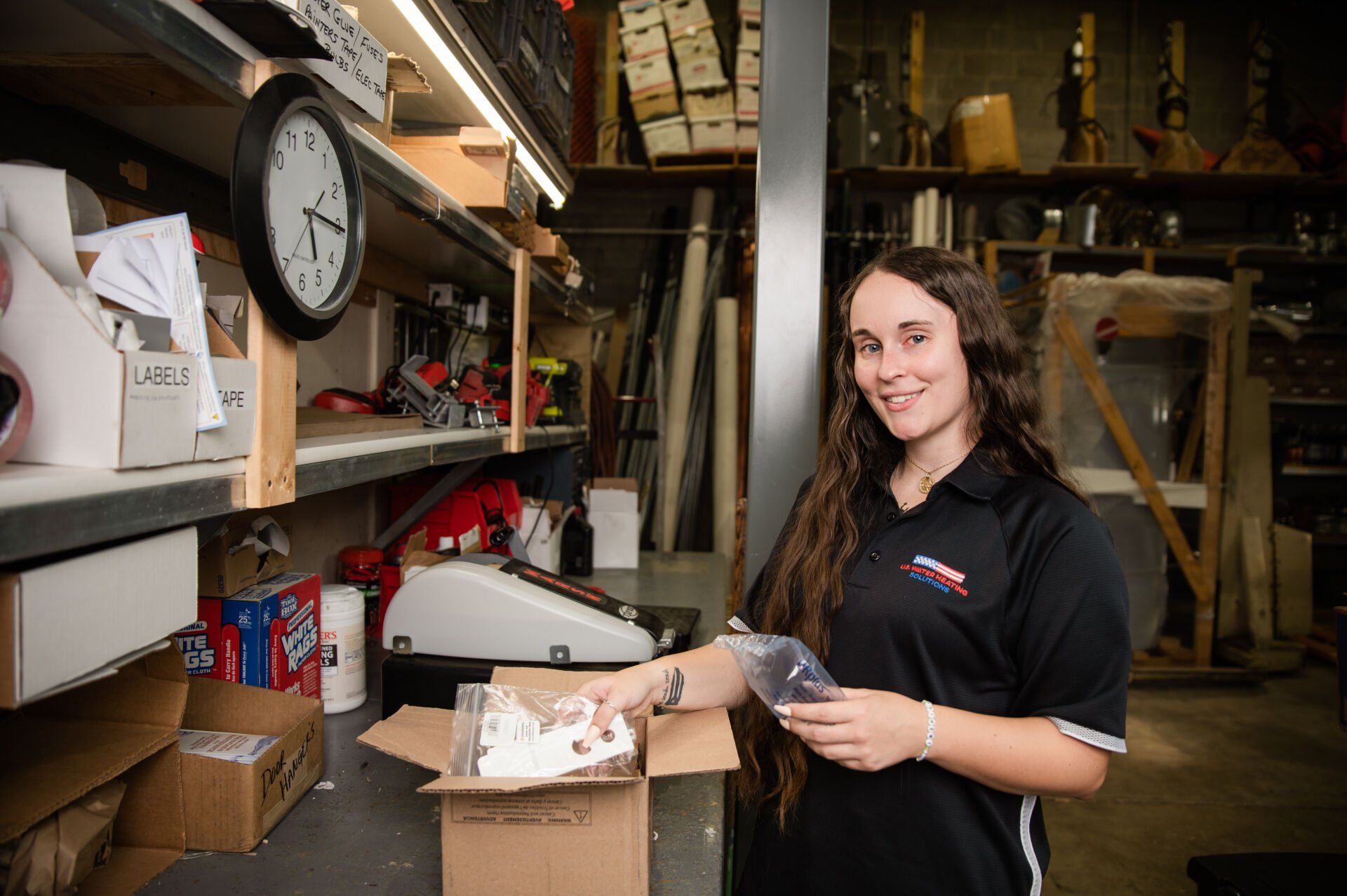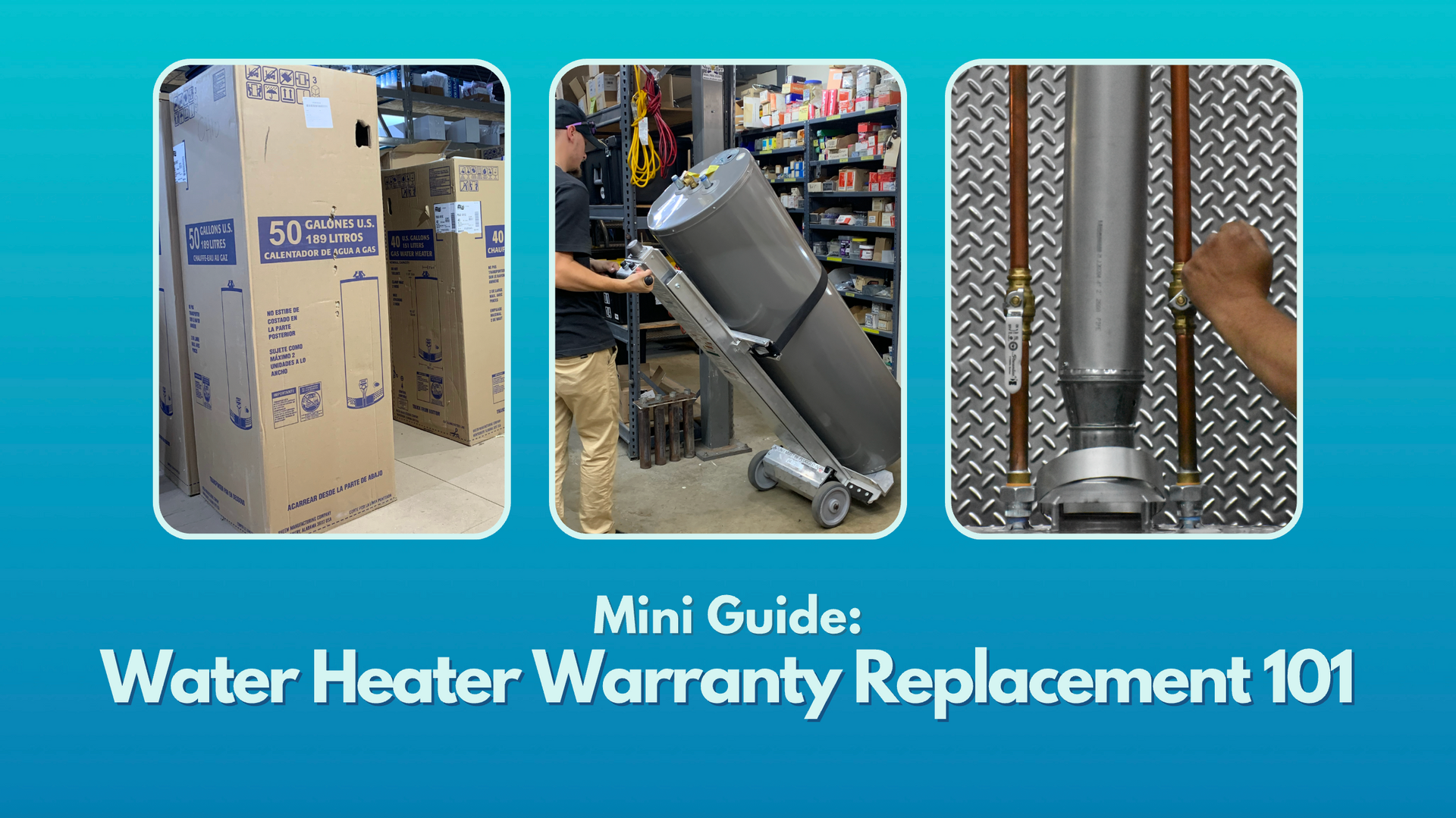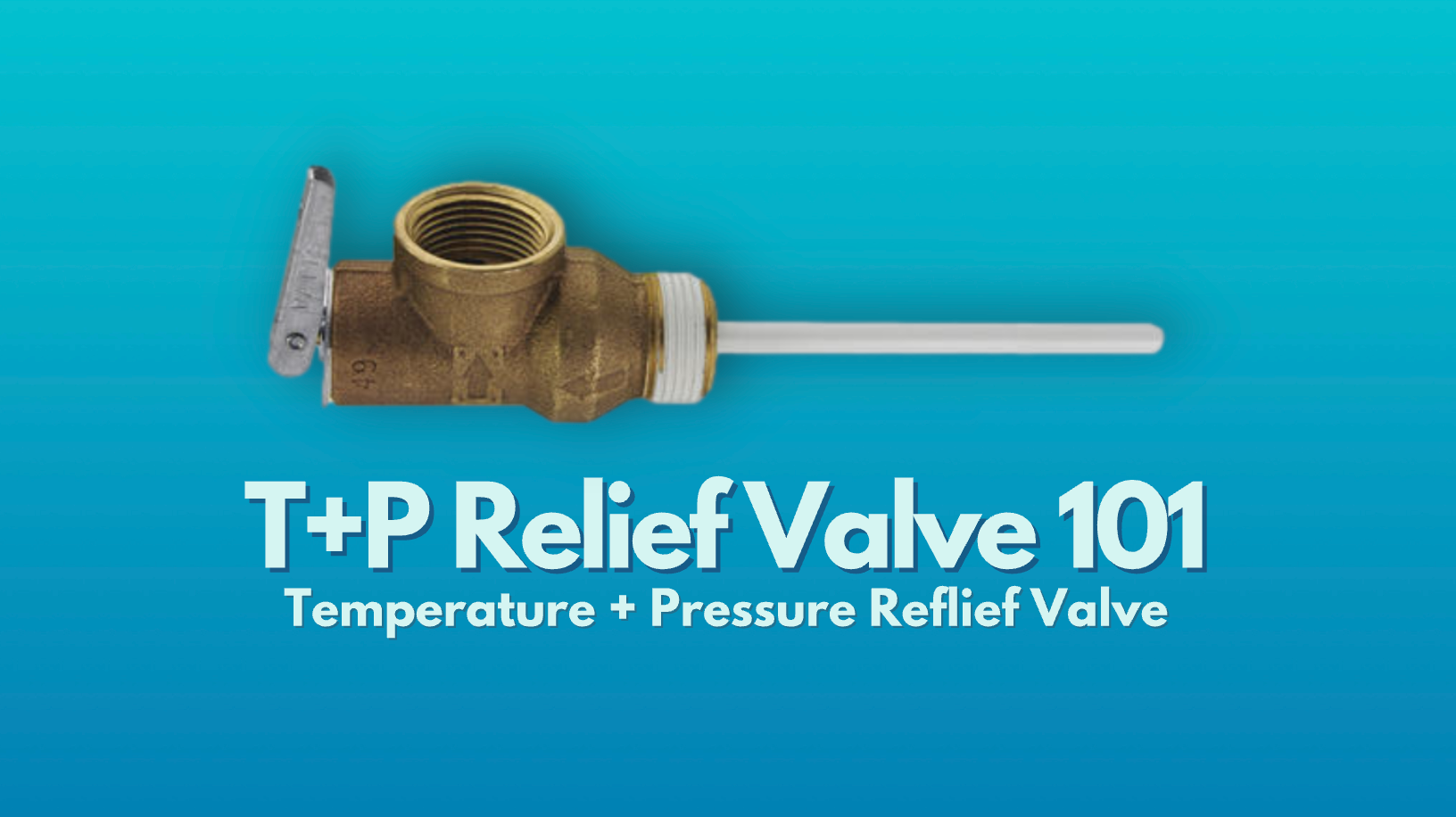Gas Valve 101
Last Updated 03.17.2025
***DISCLAIMER: PLEASE REFER TO YOUR MANUFACTURER’S INSTALLATION MANUAL FOR INFORMATION REGARDING YOUR SPECIFIC MODEL. IF YOU ARE ATTEMPTING TO SERVICE YOUR OWN HEATER, PLEASE DO SO WITH CAUTION; U.S. WATER HEATING SOLUTIONS, LLC. AND THE OTHER ORGANIZATIONS MENTIONED BELOW ARE NOT RESPONSIBLE FOR ASSOCIATED LIABILITIES. THIS ARTICLE IS MEANT TO PROVIDE AN INFORMATIVE AND EDUCATIONAL SUMMARY AND DOES NOT SUPERSEDE OFFICIAL WATER HEATER REPAIRS OR MANUFACTURER INFORMATION.
What is a Gas Valve?
The gas valve is the temperature and gas control found on a natural gas water heater or a LP water heater. This valve is responsible for opening and closing the incoming gas to the water heater based on the temperature setting.
Some other common names you may see in place of “gas valve” include:
- Gas control
- Gas control valve (aka GCV)
- Gas control thermostat
- Thermostat*
*Although some manufacturers or plumbing professionals may refer to a gas valve as a “thermostat” or “t-stat,” please note that this is distinct from the thermostat found on an electric water heater.
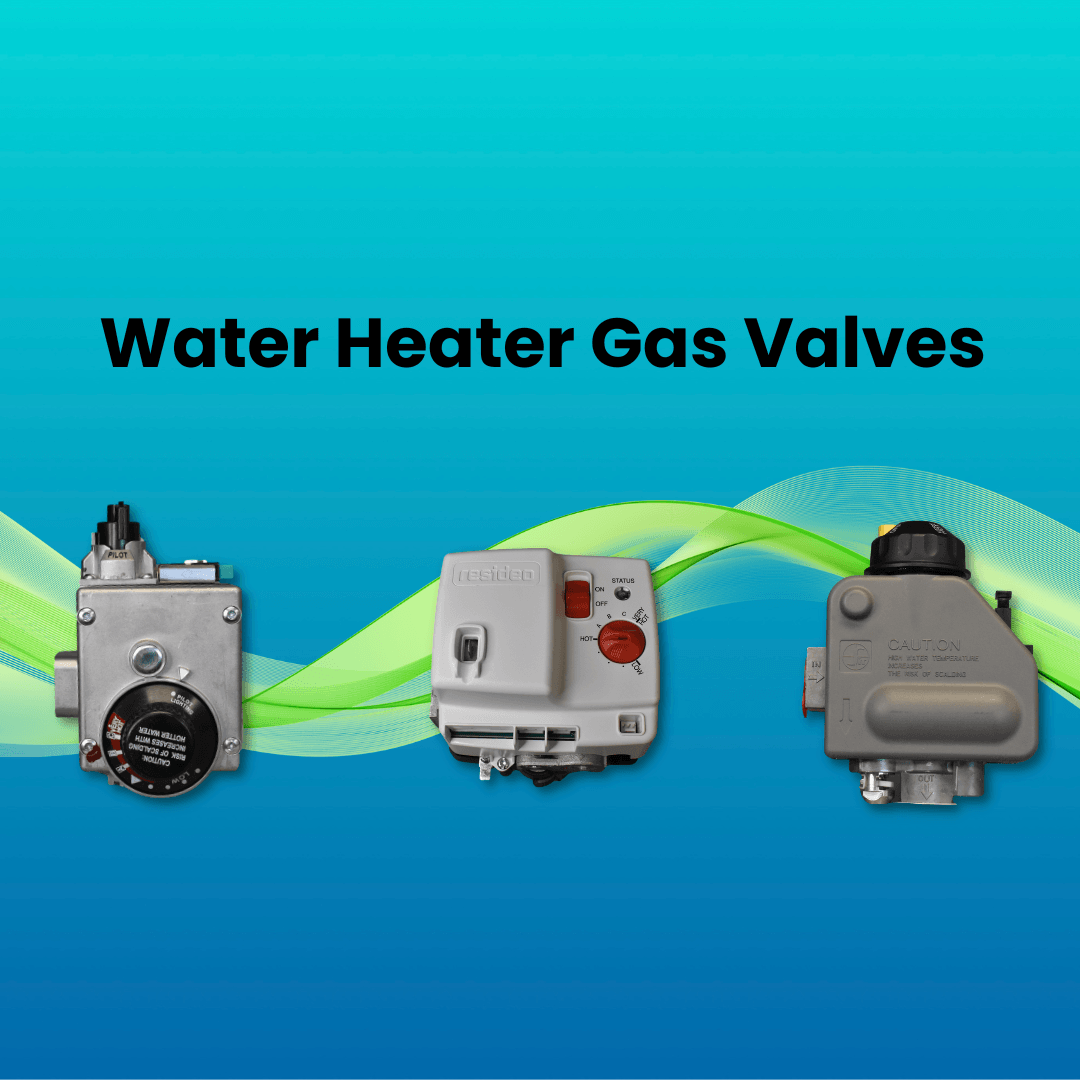
What’s the Difference Between a Gas Regulator and a Gas Control Valve?
A gas regulator and gas control valve are NOT the same thing. A gas regulator is usually a secondary addition to a gas line that monitors the gas pressure before it enters a water heater or other apparatus, while the water heater’s gas control valve is a part of the water that controls the amount of gas flowing into the water heater.
Where is the Gas Valve Located?
On residential water heaters the gas valve is located at the bottom of the heater, just above the burner chamber. The gas valve can typically be seen from the outside of the water heater, as indicated by the images shown here.
Although some commercial standard atmospheric water heaters may have gas valves located at the bottom of the unit, the majority of commercial water heaters have gas valves located at the top of the unit. We will be exploring gas valves for commercial water heaters in our Water Heater 201: Commercial Water Heaters article series.
Anatomy of a Gas Valve
A water heater gas control valve may appear to be a relatively simple part based on its general description above. However, gas valves are complex, containing their own individual control boards, solenoids, and streams of communication, which enable them to oversee a gas water heater’s operation. The goal of this article is to provide a basic overview of gas control valves for residential water heaters; therefore, we will not go into detail about the interior electronic components in this article.
Temperature Control Knob | This allows the end user to set the desired temperature for their hot water. The U.S. Consumer Product Safety Commission (CPSC) recommends setting water heaters to 120 degrees Fahrenheit to prevent scalding.
- Temperature adjustments are not typically covered by the manufacturer’s warranty
Status Light | Indicates the water heater’s status as idle, heating the water, or in need of service (further information below in the What should the light on a gas valve do? Section)
Ignitor Connection | Clip for the pilot ignitor wire to connect to the gas valve for the purposes of sending electronic signals
Blower Harness Connection | A 5-pin adapter which sends a signal from a Power Vent unit’s blower assembly to the gas valve; in the event that there is an issue with the blower assembly or the venting, the adapter will send a signal to close the gas valve
Thermal Well Connection | A 3-pin adapter located inside of the thermal well that connects to the gas valve to communicate the water temperature
Thermal Well | The thermal well is a metal shank that typically comes attached to the gas valve (or may be separate from the gas valve as shown by our main gas control valve model) and goes inside of the water heater. The thermal well senses the temperature of the water, letting the gas valve know whether it needs to open to heat the water.
How does a gas valve work?
In a nut shell: The gas valve’s thermal well senses the temperature of the water inside the water heater. If the temperature of the water is below the desired temperature setting indicated by the dial on the gas control valve, the gas valve will open the gas supply line, feeding gas into the burner chamber via the burner tube (aka burner manifold tube) so that the burner will be lit/remain lit by the pilot assembly’s ignitor. During this process, the pilot assembly and thermal well send electric signals to the gas valve to ensure that the unit is operating safely, and to tell the gas valve when to stop allowing gas into the burner assembly.
What should the light on a gas valve do?
If you have an electronic gas valve with a status light, the light should normally be green or blue. Also, it should flash, typically once every four seconds, indicating that the water heater is idle; alternatively, the light may also alternate from bright to dim, indicating that the unit is heating water. If the light is off, there is no electrical power to the unit; if there is any other flash sequence or the light is red, there is likely an issue with your unit. For details regarding your specific unit, please refer to your installation manual, where you can typically find a diagnostic and troubleshooting chart; some gas valve models may also have a label with flash codes and explanations directly on their face plate.
What should the light on a gas valve do?
If your gas valve has a status light, the light should normally be green or blue. Also, it should flash, typically once every four seconds, indicating that the water heater is idle; alternatively, the light may also alternate from bright to dim, indicating that the unit is heating water. If the light is off, there is no electrical power to the unit; if there is any other flash sequence or the light is red, there is likely an issue with your unit. For details regarding your specific unit, please refer to your installation manual, where you can typically find a diagnostic and troubleshooting chart; some gas valve models may also have a label with flash codes and explanations directly on their face plate.
How do I know if my water heater’s gas valve needs to be replaced?
The most common indications that your gas valve needs to be replaced include:
- Gas valve related flash code (see Flash Code Section below)
- No hot water or inconsistent hot water (although this could be caused by many other issues)
- If you have changed the pilot assembly and still do not have a consistent flame, it is probably the gas valve
How much do replacement gas valves cost?/Are replacement gas valves expensive?
This depends on three major factors: the age of the unit, the size of the unit, and the availability of the gas valve.
The cost of a residential gas valve is typically anywhere from $110.00 to $250.00 (or more) each. Prior to contacting a service provider, be sure to check and see if your water heater is still covered under warranty; during your phone call to the manufacturer, they may be able to confirm the diagnosis of a faulty gas valve and send you a replacement part. If your unit is still under warranty, they typically send the part for free, with the option to add expedited delivery for a fee.
The average gas valve replacement requires a technician to be on site for 45 to 60 minutes. In the event that you are responsible for the labor costs, a simple way to save some money of your service call will be to drain your water heater prior to the technician’s arrival; this way, they will be able to verify the faulty gas valve diagnosis, remove the old gas valve, install the new gas valve, re-fill your unit, check for gas leaks, and ensure that your unit is functioning properly without having to wait for the water to drain.
Common Causes of Water Heater Gas Valve Failure
Thinking your gas valve may need to be replaced? It may be more common than you think! Residential water heater gas valve replacement is one of our most common diagnosis and repair services because gas valves are one of the three most important parts on a gas water heater. Some common causes of gas valve replacement include:
List of Services
-
General Wear + UseList Item 1
Sediment build-up on the thermal well (temperature sensor) can prevent the gas valve from sensing the water’s temperature. As a result, it will prevent the gas valve from sending the signal to open the gas valve.
-
"Roach Valve"List Item 2
Cockroaches and other bugs may be attracted to the gas valve’s internal control board and LED light because these electronic controls generate heat; the bugs tend to infiltrate the gas valve’s face plate and begin to nest inside, chewing on the internal components and preventing the gas valve
-
Incorrect Gas Valve: Installing a Natural Gas Gas Control Valve on LP Water Heater or LP Gas Control Valve on Natural Gas Water HeaterList Item 3
Although most gas valve models have a natural gas version and a LP version, these two parts are NOT interchangeable. The gas valves may appear to be the exact same and may operate for some time when installed on the incorrect heater, the gas valves are actually different. The main difference is that LP gas control valves have left-handed threads on the burner supply tube nut.
Even if the incorrect gas valves temporarily work, they tend to fail within the first year of use. LP gas has a larger volume, meaning that it can produce more heat using less gas than natural gas. When a LP gas valve is on a natural gas water heater, it will call for more gas to meet this larger volume expectation. Eventually this will cause the burner to have a build-up of soot, preventing it from lighting properly and efficiently.
How to Distinguish Gas Control Valves for Natural Gas and LP Water Heaters
Visually, you can usually differentiate the two based on the color. Electronic gas valves for a LP unit usually have a red back, while gas valves for a natural gas unit will have a black back. This is demonstrated via the images in this article using the Rheem gas valves SP20231 (NG) and SP20233 (LP). The two valves are nearly identical otherwise. The newer model Rheem gas valves have a simple face and a single dial on the top; as a result, the Natural Gas model SP20303DT has a black dial and the LP model SP20304D has a red dial (image 3).
This color differentiation for the new Rheem gas valves is NOT to be confused the color of the temperature control knob and on/off switches on electronic gas valves shown in images 1-2. Many gas valve models with status lights have red dials and switches even when they are made for natural gas water heaters or black dials and switches when they are for LP water heaters.
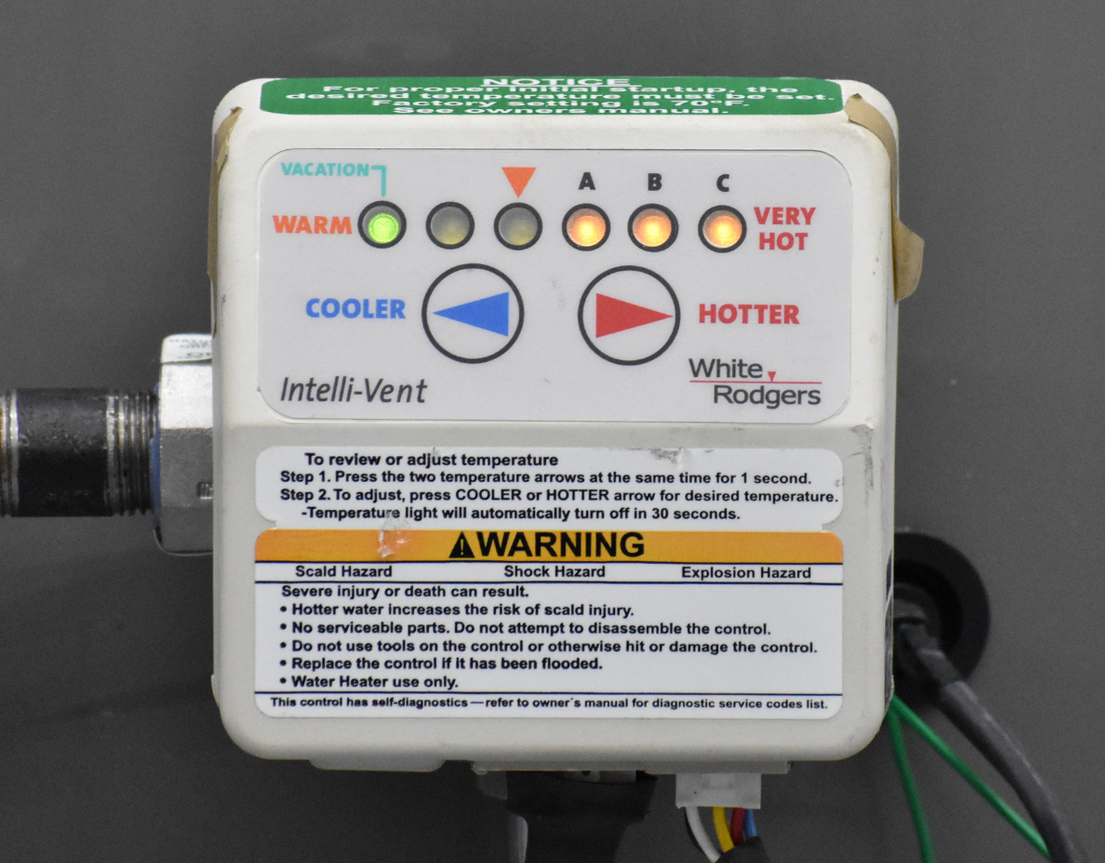
Example error code indicating need for gas valve replacement
The Two Most Common Gas Valve Flash Codes
Electronic gas valves will have a LED indicator light to assist homeowners and repair technicians with the diagnosis and repair process. Here are some common flash codes that indicate your unit has a faulty gas valve*
A.O. Smith Gas Valves | 8-4 Flash Code (a.k.a. Eight flashes, four flashes and three second pause) --> Gas valve fault detected = replace gas valve
Bradford White Gas Valves | 6-1 Flash Code (a.k.a. Six flashes, one flash, and three second pauses) --> check gas supply, monitor pilot and test pilot assembly’s resistance; if neither replace gas valve
*Please refer to your unit’s gas valve and installation manual for specifics, as flash codes differ by gas valve model and some error codes may be generic.
Common Misdiagnosis: Forgetting to Pay the Gas Bill
Sometimes customers think they have a faulty pilot assembly or gas valve when their pilot assembly will not light or will not remain lit. In some cases, this may actually be due to a lack of available gas supply; if you have forgotten to pay your natural gas bill or have not had a visit from your LP supplier to replenish your LP tank, your water heater will no longer produce hot water. It is possible that there is enough gas inside the gas line/gas pipe between the meter and the water heater (even after the gas has been shut off) to allow the unit to fire temporarily; in these cases the unit often lights and the pilot goes out. After gas is restored, your pilot should light the burner without issue.
Can I replace a Gas Valve on my own?
Someone with prior plumbing and/or HVAC knowledge may be able to replace a gas valve on their own. The major manufacturers and U.S. Water Heating Solutions, LLC. recommend that a qualified service professional perform the replacement to for safety purposes, as the replacement process involves touching the gas line and improper installation can result in a gas leak.
Do I remove the plastic from the gas valve? / Why is there plastic on my gas valve? /
What is this plastic sleeve for?/
Do you remove plastic from gas control valve?
NO, YOU SHOULD NOT REMOVE THE PLASTIC SLEEVE FROM THE GAS VALVE.
As shown above in the gas valve anatomy section, many gas valve models have a thermal well/temperature sensor/copper sensing tube attached to them right out of the box. These thermal wells are often covered with plastic that stems from the body of the gas valve and may be open ended or extend slightly beyond the thermal well, with a bend at the end. These plastic sleeves should not be removed (for an example manufacturer's citation see: Robert Shaw, 2014, p. 1).
The purpose of this plastic sleeve is to protect the thermal well from sediment build-up.
The thermal well is constantly submerged inside the water heater, sensing the water's temperature and subjecting it [the thermal well] to the minerals left behind during the heating process, which tend to gather near the bottom of the tank.
Are Gas Valves interchangeable?
No. Unlike other parts (namely for electric water heaters), gas valves are NOT interchangeable. This is because gas valves are usually specific to: model and production date range. This means that two water heaters with the same model number may have two different gas valves and two different pilot assemblies.
Additionally, gas valves vary in size and type depending on whether the water heater is Standard Atmospheric or Power Vent, Natural Gas or LP, the size of the water heater, the type of ignition, and more. Each of these factors plays a role in the type of gas valve they need.
Some Common Gas Valves @uswhpro Typically Stocks*
100262938 – 1” CAV NG Service Gas Valve Kit, HW, N3 [A.O. SMITH, STATE]
100262939 – 2” CAV NG Service Gas Valve Kit, HW, N3 [A.O. SMITH, STATE]
100112336 – NG Natural Gas Control Valve [A.O. SMITH, STATE]
100112339 – 10” WC Gas Valve, LP [A.O. SMITH, STATE]
SP20303D – Natural Gas Control Thermostat [RHEEM]
SP20304D – Gas Control (Thermostat) - LP [RHEEM]
SP20296 – Gas Control Service Part Kit [RHEEM]
SP20297 - Gas Control Service Part Kit [RHEEM]
*Note: These Gas Valves are not guaranteed to be in stock. Part replacements go in cycles and we can be out of stock of a certain part for a day, a week, or even for several months. Please call our Parts Dept. for parts pricing + availability at (833)-879-4776.
Why U.S. Water Heating Solutions?
In addition to our wide variety of gas valve stock, our technicians are factory trained and certified, providing warranty service across the Midwest + South; gas valve replacements are one of our most common repairs, with each of our technicians seeing at least one gas valve replacement per week (on average). Plus, all of our technicians’ service vehicles are stocked with Hercules Megabubble Leak Detector to ensure that gas valves are fully tightened and leak free.




